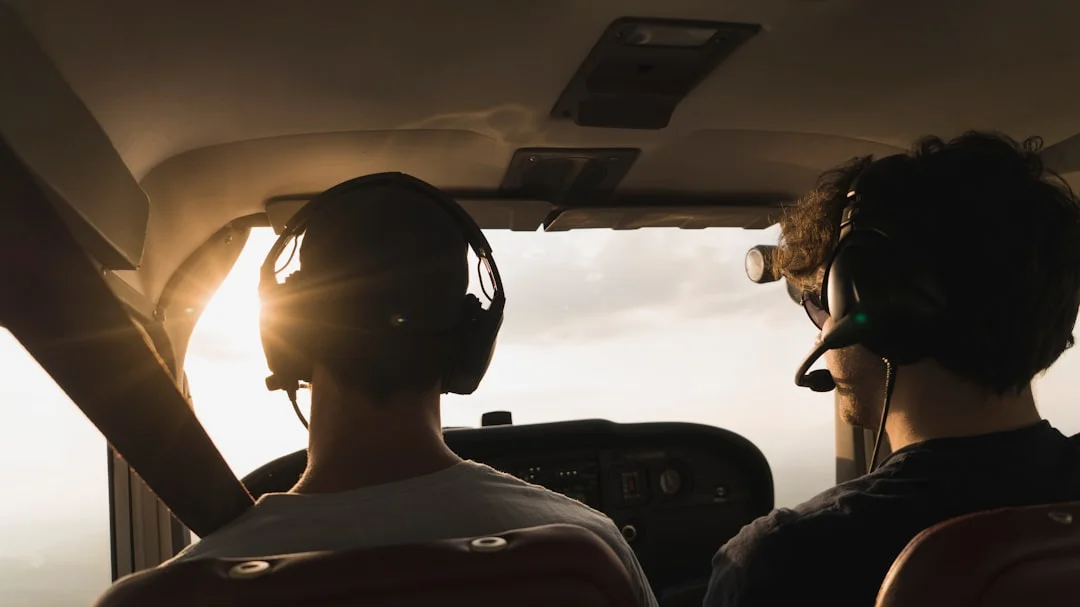The Continuous Descent Final Approach (CDFA) is a technique used in aviation during the final approach phase of an aircraft’s landing. It is a method that allows for a smoother and more fuel-efficient descent, reducing noise and emissions. CDFA is gaining popularity in the aviation industry as it offers several benefits over traditional step-down approaches. In this article, we will explore what CDFA is, how it works, and why it is beneficial for both airlines and the environment.
Contents
The Mechanics of Continuous Descent Final Approach
In a traditional step-down approach, an aircraft descends in a series of leveled flight segments interrupted by level-offs, where it maintains a constant altitude before commencing the next descent segment. On the other hand, a Continuous Descent Final Approach (CDFA) involves a controlled, steady descent from cruising altitude to the runway threshold without any intermediate level-offs. This means that the aircraft follows a smooth, continuous descent path, maintaining a constant descent angle throughout.
The descent angle for a CDFA is typically between 3 and 5 degrees, depending on the aircraft type and air traffic control requirements. This angle allows for a gradual reduction in altitude while maintaining a safe and efficient speed. By maintaining a constant descent angle, the CDFA technique eliminates the need for level-offs, resulting in a smoother and more efficient landing approach.
During a CDFA, the aircraft’s engines can be set to idle power for a longer duration compared to a step-down approach. This reduced thrust setting allows for increased fuel efficiency and reduces engine noise emissions. Additionally, the continuous descent path minimizes the need for excessive throttle adjustments, providing a more stable and predictable approach for the flight crew.
By implementing a CDFA, airlines can significantly reduce their fuel consumption and emissions. According to a study conducted by the European Aviation Safety Agency (EASA), the use of CDFA can result in fuel savings of up to 180 kilograms per flight, depending on the aircraft type and flight duration. This not only leads to cost savings for airlines but also contributes to a greener and more sustainable aviation industry.
The Benefits of Continuous Descent Final Approach
The Continuous Descent Final Approach (CDFA) offers numerous benefits for both airlines and the environment. Let’s explore some of the key advantages:
1. Reduced Noise Pollution
During a CDFA, the aircraft descends in a smooth and continuous manner, resulting in reduced noise levels for communities near airports. Unlike step-down approaches that involve multiple engine power changes and level-offs, CDFA minimizes the noise impact on the ground. The decrease in noise pollution makes airports more environmentally friendly and helps improve the quality of life for nearby residents.
According to a study conducted by the National Aeronautics and Space Administration (NASA), CDFA can reduce noise levels by up to 5 decibels compared to conventional approaches. This significant reduction in noise has a positive impact on noise-sensitive areas around airports and helps to mitigate noise-related concerns.
2. Improved Air Quality
Another advantage of CDFA is its positive impact on air quality. By maintaining a steady descent path and reducing thrust adjustments, CDFA reduces fuel burn, resulting in lower emissions of greenhouse gases and pollutants. A continuous descent reduces the release of nitrogen oxides (NOx), hydrocarbons, and particulate matter, contributing to cleaner air around airports.
A study published by the International Civil Aviation Organization (ICAO) estimated that the implementation of CDFA can lead to a reduction of up to 500 kilograms of carbon dioxide (CO2) emissions per flight. With thousands of flights taking place every day, the cumulative effect of CDFA adoption can significantly contribute to reducing aviation’s carbon footprint and combatting climate change.
3. Enhanced Fuel Efficiency
Fuel efficiency is a key consideration for airlines due to its impact on operational costs and environmental sustainability. CDFA plays a vital role in enhancing fuel efficiency by offering a smoother and more direct descent path. Without the multiple level-offs and throttle adjustments required in step-down approaches, CDFA allows for a more streamlined descent, reducing fuel burn and optimizing flight operations.
According to the Federal Aviation Administration (FAA), the simplicity and efficiency of CDFA can result in fuel savings of up to 300 pounds per approach. This fuel reduction translates to significant cost savings for airlines, especially considering the high volume of flights conducted worldwide. Moreover, the reduced fuel burn directly contributes to lower carbon emissions, aligning with the industry’s commitment to sustainability.
In conclusion, the Continuous Descent Final Approach (CDFA) offers multiple advantages over traditional step-down approaches in aviation. By optimizing aircraft descent paths and eliminating unnecessary engine power changes and level-offs, CDFA reduces noise pollution, improves air quality, and enhances fuel efficiency. The adoption of CDFA not only benefits airlines by reducing operational costs but also contributes to a greener and more sustainable aviation industry. As the aviation industry continues to prioritize environmental sustainability, CDFA is becoming an increasingly important technique for pilots and air traffic controllers worldwide.
If you’d like to learn more about Continuous Descent Final Approach, you can visit the Federal Aviation Administration website for detailed technical information and guidelines on implementing CDFA in aviation operations.
For More: What is CV/DFDR in Aviation? (Cockpit Voice and Digital Flight Data Recorder)




